Chunming Qiao
Benchmarking Large and Small MLLMs
Jan 04, 2025



Abstract:Large multimodal language models (MLLMs) such as GPT-4V and GPT-4o have achieved remarkable advancements in understanding and generating multimodal content, showcasing superior quality and capabilities across diverse tasks. However, their deployment faces significant challenges, including slow inference, high computational cost, and impracticality for on-device applications. In contrast, the emergence of small MLLMs, exemplified by the LLava-series models and Phi-3-Vision, offers promising alternatives with faster inference, reduced deployment costs, and the ability to handle domain-specific scenarios. Despite their growing presence, the capability boundaries between large and small MLLMs remain underexplored. In this work, we conduct a systematic and comprehensive evaluation to benchmark both small and large MLLMs, spanning general capabilities such as object recognition, temporal reasoning, and multimodal comprehension, as well as real-world applications in domains like industry and automotive. Our evaluation reveals that small MLLMs can achieve comparable performance to large models in specific scenarios but lag significantly in complex tasks requiring deeper reasoning or nuanced understanding. Furthermore, we identify common failure cases in both small and large MLLMs, highlighting domains where even state-of-the-art models struggle. We hope our findings will guide the research community in pushing the quality boundaries of MLLMs, advancing their usability and effectiveness across diverse applications.
A Robust Federated Learning Framework for Undependable Devices at Scale
Dec 28, 2024Abstract:In a federated learning (FL) system, many devices, such as smartphones, are often undependable (e.g., frequently disconnected from WiFi) during training. Existing FL frameworks always assume a dependable environment and exclude undependable devices from training, leading to poor model performance and resource wastage. In this paper, we propose FLUDE to effectively deal with undependable environments. First, FLUDE assesses the dependability of devices based on the probability distribution of their historical behaviors (e.g., the likelihood of successfully completing training). Based on this assessment, FLUDE adaptively selects devices with high dependability for training. To mitigate resource wastage during the training phase, FLUDE maintains a model cache on each device, aiming to preserve the latest training state for later use in case local training on an undependable device is interrupted. Moreover, FLUDE proposes a staleness-aware strategy to judiciously distribute the global model to a subset of devices, thus significantly reducing resource wastage while maintaining model performance. We have implemented FLUDE on two physical platforms with 120 smartphones and NVIDIA Jetson devices. Extensive experimental results demonstrate that FLUDE can effectively improve model performance and resource efficiency of FL training in undependable environments.
Pluralistic Salient Object Detection
Sep 04, 2024



Abstract:We introduce pluralistic salient object detection (PSOD), a novel task aimed at generating multiple plausible salient segmentation results for a given input image. Unlike conventional SOD methods that produce a single segmentation mask for salient objects, this new setting recognizes the inherent complexity of real-world images, comprising multiple objects, and the ambiguity in defining salient objects due to different user intentions. To study this task, we present two new SOD datasets "DUTS-MM" and "DUS-MQ", along with newly designed evaluation metrics. DUTS-MM builds upon the DUTS dataset but enriches the ground-truth mask annotations from three aspects which 1) improves the mask quality especially for boundary and fine-grained structures; 2) alleviates the annotation inconsistency issue; and 3) provides multiple ground-truth masks for images with saliency ambiguity. DUTS-MQ consists of approximately 100K image-mask pairs with human-annotated preference scores, enabling the learning of real human preferences in measuring mask quality. Building upon these two datasets, we propose a simple yet effective pluralistic SOD baseline based on a Mixture-of-Experts (MOE) design. Equipped with two prediction heads, it simultaneously predicts multiple masks using different query prompts and predicts human preference scores for each mask candidate. Extensive experiments and analyses underscore the significance of our proposed datasets and affirm the effectiveness of our PSOD framework.
A First Physical-World Trajectory Prediction Attack via LiDAR-induced Deceptions in Autonomous Driving
Jun 17, 2024



Abstract:Trajectory prediction forecasts nearby agents' moves based on their historical trajectories. Accurate trajectory prediction is crucial for autonomous vehicles. Existing attacks compromise the prediction model of a victim AV by directly manipulating the historical trajectory of an attacker AV, which has limited real-world applicability. This paper, for the first time, explores an indirect attack approach that induces prediction errors via attacks against the perception module of a victim AV. Although it has been shown that physically realizable attacks against LiDAR-based perception are possible by placing a few objects at strategic locations, it is still an open challenge to find an object location from the vast search space in order to launch effective attacks against prediction under varying victim AV velocities. Through analysis, we observe that a prediction model is prone to an attack focusing on a single point in the scene. Consequently, we propose a novel two-stage attack framework to realize the single-point attack. The first stage of prediction-side attack efficiently identifies, guided by the distribution of detection results under object-based attacks against perception, the state perturbations for the prediction model that are effective and velocity-insensitive. In the second stage of location matching, we match the feasible object locations with the found state perturbations. Our evaluation using a public autonomous driving dataset shows that our attack causes a collision rate of up to 63% and various hazardous responses of the victim AV. The effectiveness of our attack is also demonstrated on a real testbed car. To the best of our knowledge, this study is the first security analysis spanning from LiDAR-based perception to prediction in autonomous driving, leading to a realistic attack on prediction. To counteract the proposed attack, potential defenses are discussed.
Exploring Pre-trained Text-to-Video Diffusion Models for Referring Video Object Segmentation
Mar 18, 2024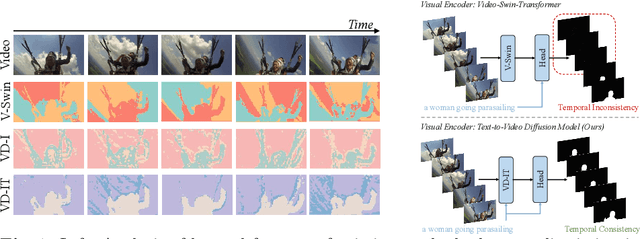
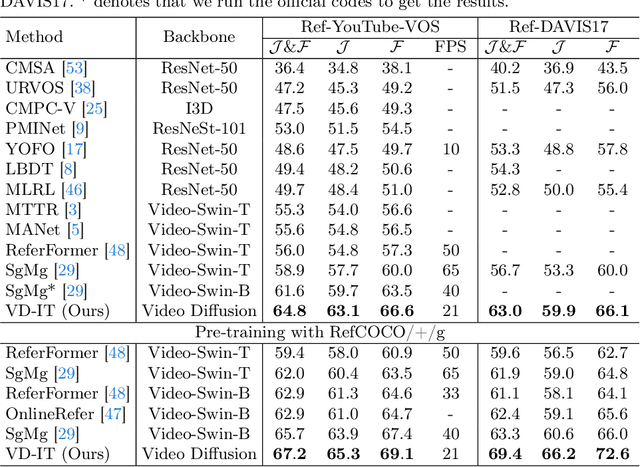
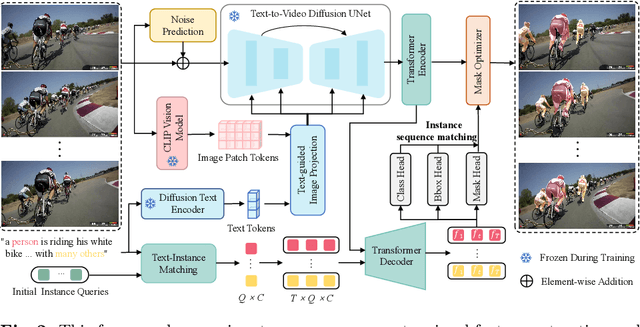
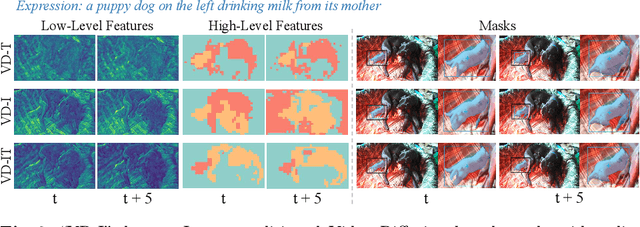
Abstract:In this paper, we explore the visual representations produced from a pre-trained text-to-video (T2V) diffusion model for video understanding tasks. We hypothesize that the latent representation learned from a pretrained generative T2V model encapsulates rich semantics and coherent temporal correspondences, thereby naturally facilitating video understanding. Our hypothesis is validated through the classic referring video object segmentation (R-VOS) task. We introduce a novel framework, termed ``VD-IT'', tailored with dedicatedly designed components built upon a fixed pretrained T2V model. Specifically, VD-IT uses textual information as a conditional input, ensuring semantic consistency across time for precise temporal instance matching. It further incorporates image tokens as supplementary textual inputs, enriching the feature set to generate detailed and nuanced masks.Besides, instead of using the standard Gaussian noise, we propose to predict the video-specific noise with an extra noise prediction module, which can help preserve the feature fidelity and elevates segmentation quality. Through extensive experiments, we surprisingly observe that fixed generative T2V diffusion models, unlike commonly used video backbones (e.g., Video Swin Transformer) pretrained with discriminative image/video pre-tasks, exhibit better potential to maintain semantic alignment and temporal consistency. On existing standard benchmarks, our VD-IT achieves highly competitive results, surpassing many existing state-of-the-art methods. The code will be available at \url{https://github.com/buxiangzhiren/VD-IT}
MergeSFL: Split Federated Learning with Feature Merging and Batch Size Regulation
Nov 22, 2023Abstract:Recently, federated learning (FL) has emerged as a popular technique for edge AI to mine valuable knowledge in edge computing (EC) systems. To mitigate the computing/communication burden on resource-constrained workers and protect model privacy, split federated learning (SFL) has been released by integrating both data and model parallelism. Despite resource limitations, SFL still faces two other critical challenges in EC, i.e., statistical heterogeneity and system heterogeneity. To address these challenges, we propose a novel SFL framework, termed MergeSFL, by incorporating feature merging and batch size regulation in SFL. Concretely, feature merging aims to merge the features from workers into a mixed feature sequence, which is approximately equivalent to the features derived from IID data and is employed to promote model accuracy. While batch size regulation aims to assign diverse and suitable batch sizes for heterogeneous workers to improve training efficiency. Moreover, MergeSFL explores to jointly optimize these two strategies upon their coupled relationship to better enhance the performance of SFL. Extensive experiments are conducted on a physical platform with 80 NVIDIA Jetson edge devices, and the experimental results show that MergeSFL can improve the final model accuracy by 5.82% to 26.22%, with a speedup by about 1.74x to 4.14x, compared to the baselines.
PointACL:Adversarial Contrastive Learning for Robust Point Clouds Representation under Adversarial Attack
Sep 14, 2022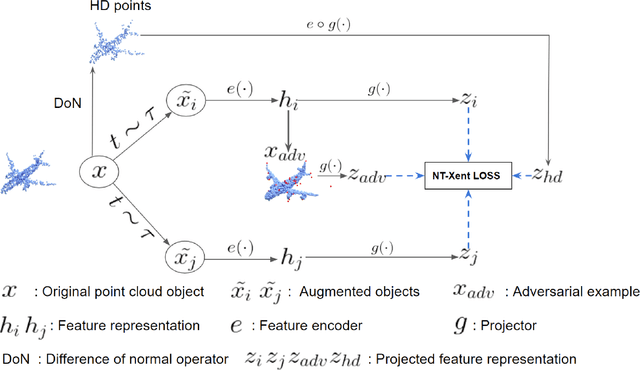



Abstract:Despite recent success of self-supervised based contrastive learning model for 3D point clouds representation, the adversarial robustness of such pre-trained models raised concerns. Adversarial contrastive learning (ACL) is considered an effective way to improve the robustness of pre-trained models. In contrastive learning, the projector is considered an effective component for removing unnecessary feature information during contrastive pretraining and most ACL works also use contrastive loss with projected feature representations to generate adversarial examples in pretraining, while "unprojected " feature representations are used in generating adversarial inputs during inference.Because of the distribution gap between projected and "unprojected" features, their models are constrained of obtaining robust feature representations for downstream tasks. We introduce a new method to generate high-quality 3D adversarial examples for adversarial training by utilizing virtual adversarial loss with "unprojected" feature representations in contrastive learning framework. We present our robust aware loss function to train self-supervised contrastive learning framework adversarially. Furthermore, we find selecting high difference points with the Difference of Normal (DoN) operator as additional input for adversarial self-supervised contrastive learning can significantly improve the adversarial robustness of the pre-trained model. We validate our method, PointACL on downstream tasks, including 3D classification and 3D segmentation with multiple datasets. It obtains comparable robust accuracy over state-of-the-art contrastive adversarial learning methods.
SoK: On the Semantic AI Security in Autonomous Driving
Mar 10, 2022
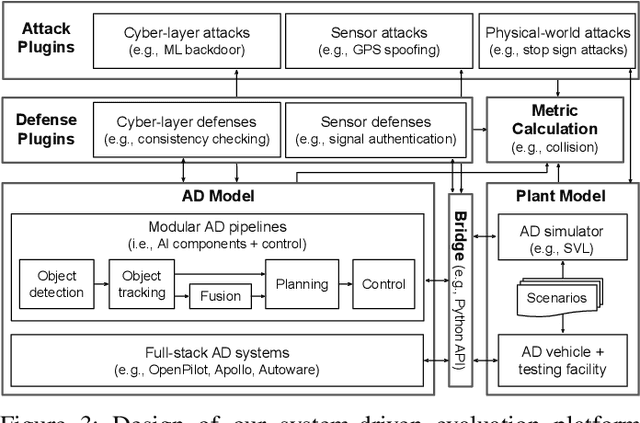
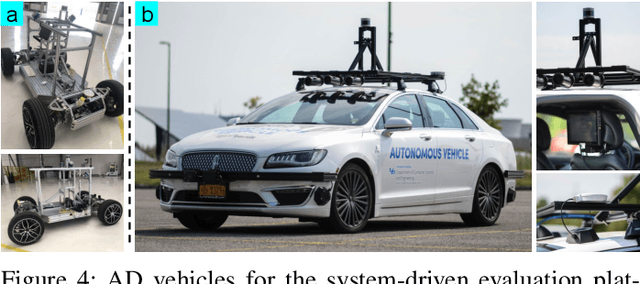

Abstract:Autonomous Driving (AD) systems rely on AI components to make safety and correct driving decisions. Unfortunately, today's AI algorithms are known to be generally vulnerable to adversarial attacks. However, for such AI component-level vulnerabilities to be semantically impactful at the system level, it needs to address non-trivial semantic gaps both (1) from the system-level attack input spaces to those at AI component level, and (2) from AI component-level attack impacts to those at the system level. In this paper, we define such research space as semantic AI security as opposed to generic AI security. Over the past 5 years, increasingly more research works are performed to tackle such semantic AI security challenges in AD context, which has started to show an exponential growth trend. In this paper, we perform the first systematization of knowledge of such growing semantic AD AI security research space. In total, we collect and analyze 53 such papers, and systematically taxonomize them based on research aspects critical for the security field. We summarize 6 most substantial scientific gaps observed based on quantitative comparisons both vertically among existing AD AI security works and horizontally with security works from closely-related domains. With these, we are able to provide insights and potential future directions not only at the design level, but also at the research goal, methodology, and community levels. To address the most critical scientific methodology-level gap, we take the initiative to develop an open-source, uniform, and extensible system-driven evaluation platform, named PASS, for the semantic AD AI security research community. We also use our implemented platform prototype to showcase the capabilities and benefits of such a platform using representative semantic AD AI attacks.
Generation For Adaption: A GAN-Based Approach for 3D Domain Adaption with Point Cloud Data
Feb 26, 2021

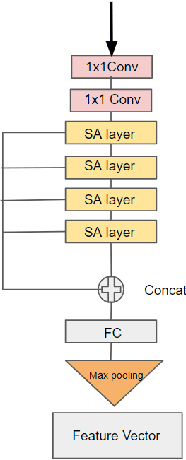
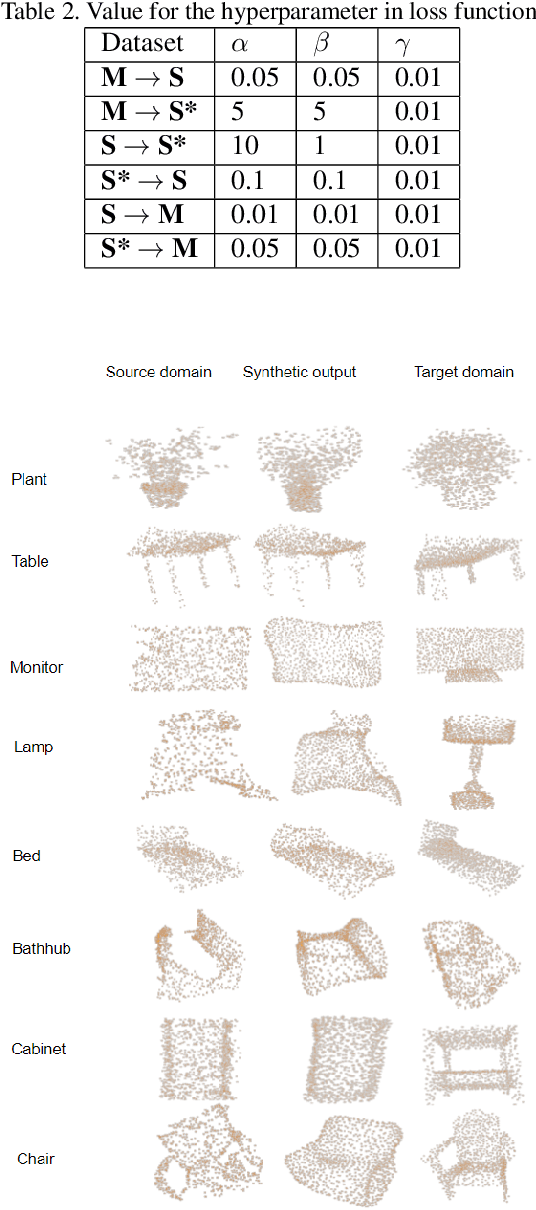
Abstract:Recent deep networks have achieved good performance on a variety of 3d points classification tasks. However, these models often face challenges in "wild tasks".There are considerable differences between the labeled training/source data collected by one Lidar and unseen test/target data collected by a different Lidar. Unsupervised domain adaptation (UDA) seeks to overcome such a problem without target domain labels.Instead of aligning features between source data and target data,we propose a method that use a Generative adversarial network to generate synthetic data from the source domain so that the output is close to the target domain.Experiments show that our approach performs better than other state-of-the-art UDA methods in three popular 3D object/scene datasets (i.e., ModelNet, ShapeNet and ScanNet) for cross-domain 3D objects classification.
PocketCare: Tracking the Flu with Mobile Phones using Partial Observations of Proximity and Symptoms
May 07, 2019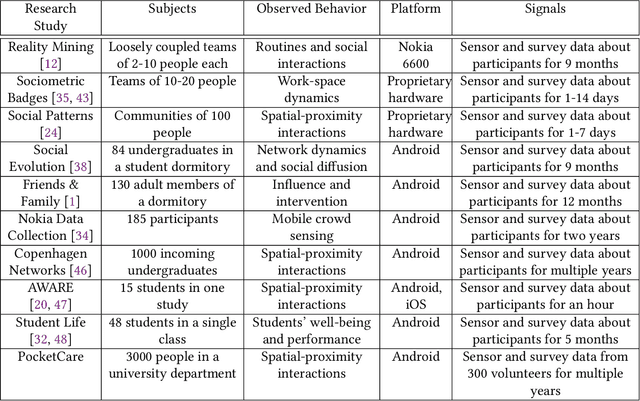
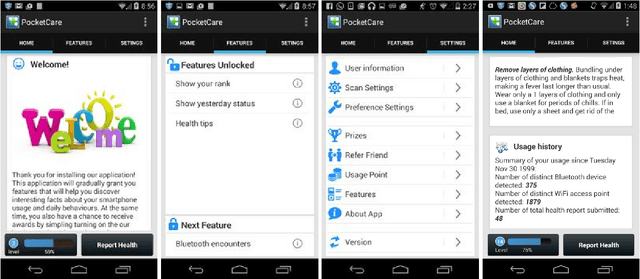
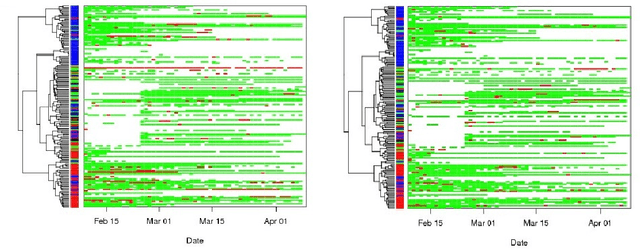
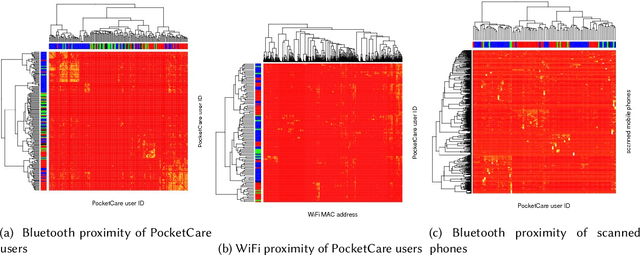
Abstract:Mobile phones provide a powerful sensing platform that researchers may adopt to understand proximity interactions among people and the diffusion, through these interactions, of diseases, behaviors, and opinions. However, it remains a challenge to track the proximity-based interactions of a whole community and then model the social diffusion of diseases and behaviors starting from the observations of a small fraction of the volunteer population. In this paper, we propose a novel approach that tries to connect together these sparse observations using a model of how individuals interact with each other and how social interactions happen in terms of a sequence of proximity interactions. We apply our approach to track the spreading of flu in the spatial-proximity network of a 3000-people university campus by mobilizing 300 volunteers from this population to monitor nearby mobile phones through Bluetooth scanning and to daily report flu symptoms about and around them. Our aim is to predict the likelihood for an individual to get flu based on how often her/his daily routine intersects with those of the volunteers. Thus, we use the daily routines of the volunteers to build a model of the volunteers as well as of the non-volunteers. Our results show that we can predict flu infection two weeks ahead of time with an average precision from 0.24 to 0.35 depending on the amount of information. This precision is six to nine times higher than with a random guess model. At the population level, we can predict infectious population in a two-week window with an r-squared value of 0.95 (a random-guess model obtains an r-squared value of 0.2). These results point to an innovative approach for tracking individuals who have interacted with people showing symptoms, allowing us to warn those in danger of infection and to inform health researchers about the progression of contact-induced diseases.
 Add to Chrome
Add to Chrome Add to Firefox
Add to Firefox Add to Edge
Add to Edge